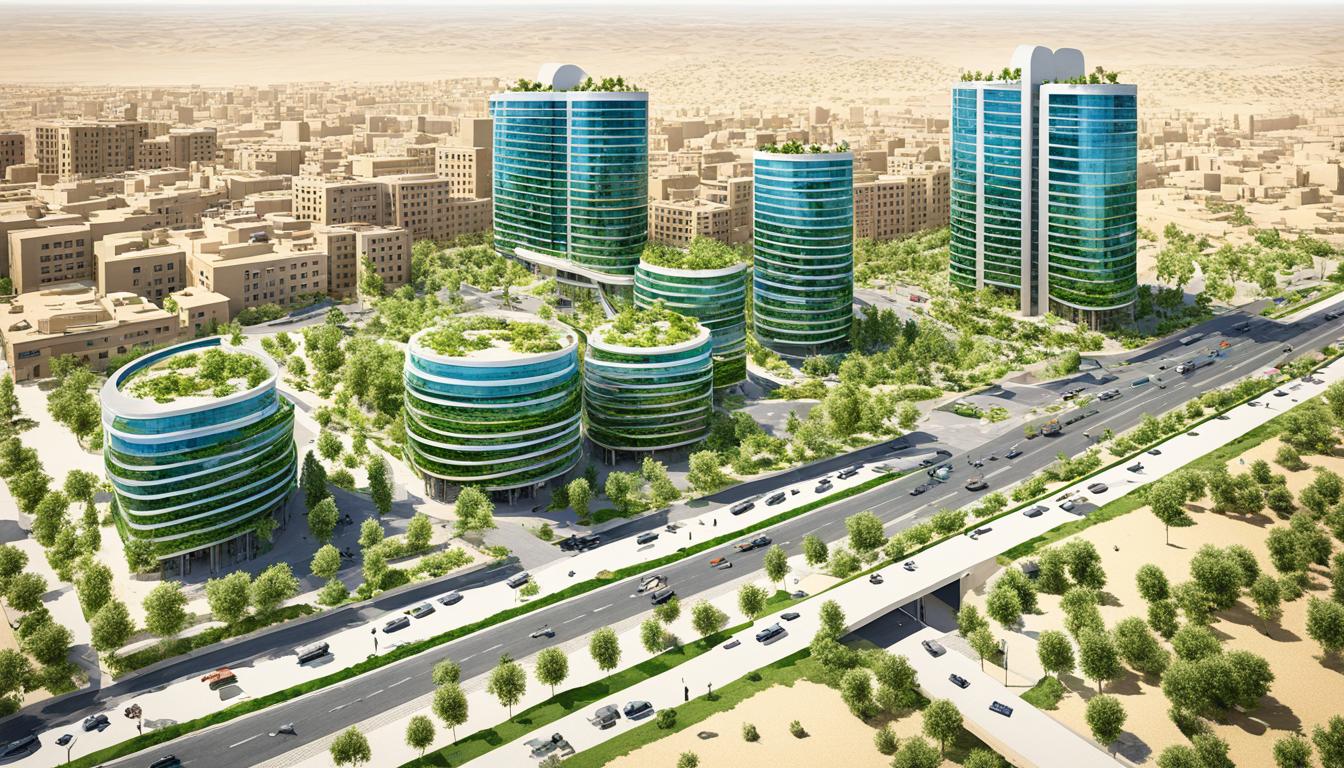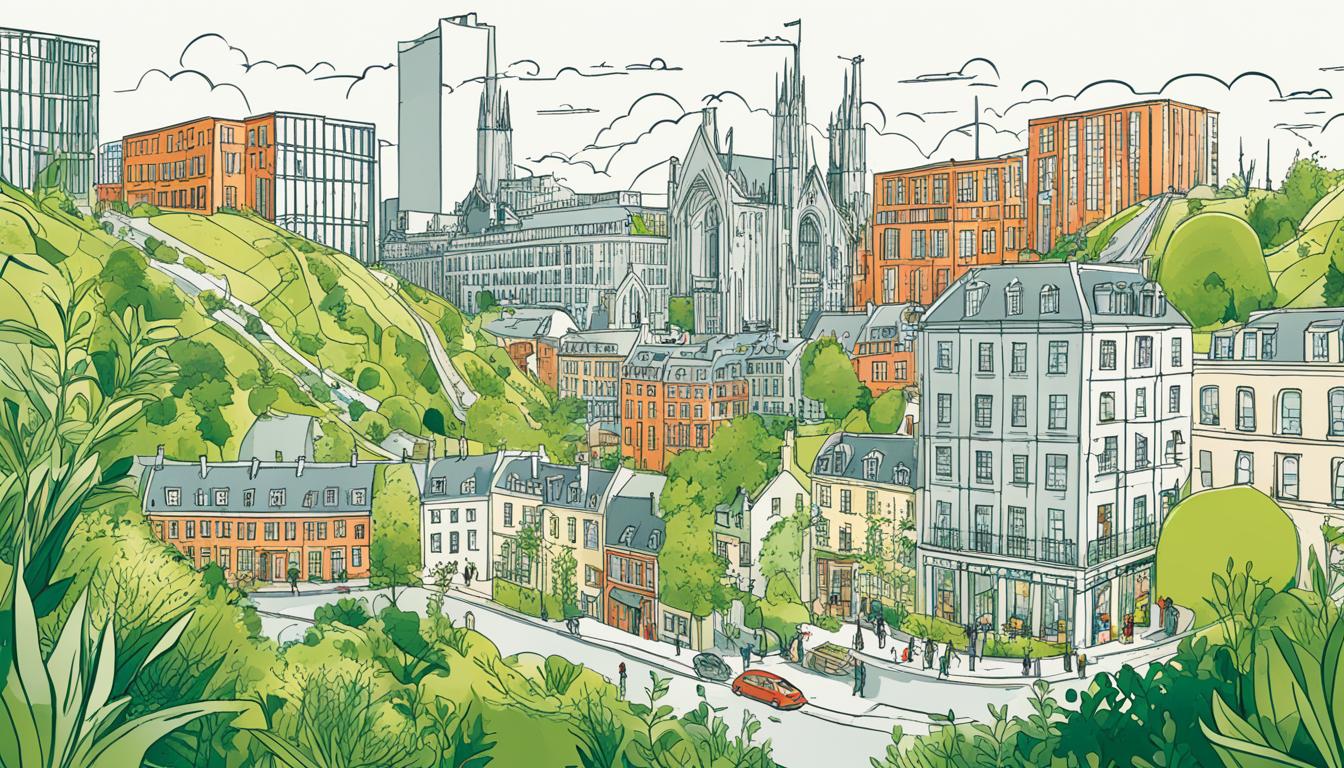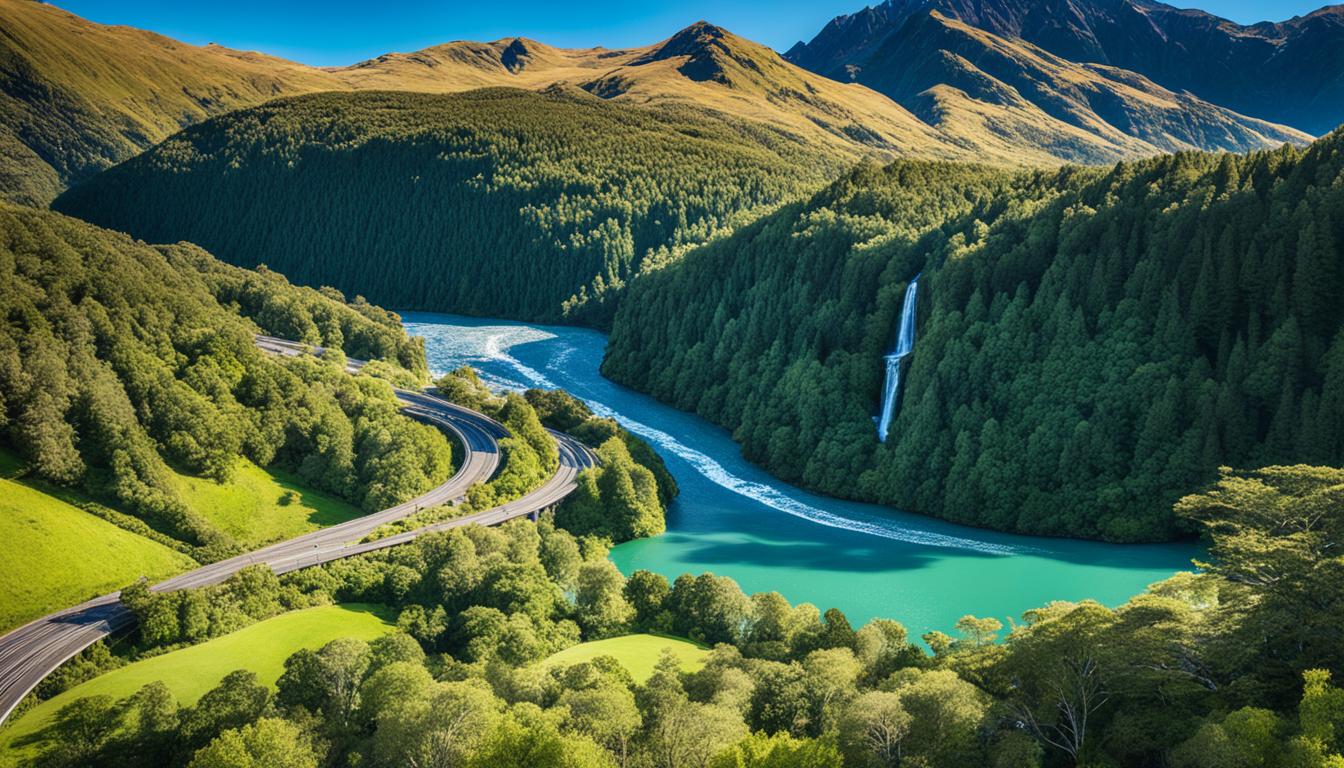Iran Biodiversity and the Built Environment
Did you know that almost one-quarter of officially protected land in Iran is under intense human pressure? This surprising statistic highlights the significant impact of urban development and human activities on Iranian ecosystems. Sustainable design and environmental conservation in Iran face unique challenges due to the delicate balance between urban development and biodiversity preservation. The built environment must be carefully planned and managed to ensure the protection of Iran’s natural habitats and wildlife.
Key Takeaways:
- Almost 25% of protected land in Iran experiences intense human pressure.
- Urban development and human activities have a significant impact on Iranian ecosystems.
- Sustainable design and environmental conservation face unique challenges in Iran.
- Preserving Iran’s natural habitats and wildlife is crucial for biodiversity planning.
- Iranian wildlife preservation efforts are essential for long-term conservation.
Human Impacts on Biodiversity
Human activities have a detrimental effect on biodiversity worldwide, contributing to the decline of species, population reductions, and the degradation of ecosystem services and functions. The rapid increase in human population and the consequent demand for natural resources pose significant challenges to the conservation of natural areas. It is crucial to understand the patterns of human impacts on the environment to develop targeted management strategies and take action to preserve biodiversity.
The Impact of Human Activities
Human activities such as deforestation, habitat degradation, pollution, overexploitation of resources, and climate change have direct and indirect effects on biodiversity. The loss and modification of habitats result in the displacement and decline of species that rely on specific environments for their survival. This loss of biodiversity negatively impacts ecosystem stability and resilience.
“Human beings have devastated forests, polluted waterways, and altered ecosystems, exacerbating the decline of many species. It is essential to recognize the critical role that humans play in the preservation of biodiversity and take action to mitigate our negative impacts.”
Habitat Degradation and Loss
Habitat degradation, including land conversion for agriculture, urbanization, and infrastructure development, poses a significant threat to biodiversity. Fragmentation of habitats disrupts ecological processes such as migration, pollination, and seed dispersal. It leads to the isolation of populations, increased vulnerability to disturbances, reduced genetic diversity, and decreased resilience to environmental changes.
Conservation Efforts and Protected Areas
Conservation efforts aim to address the human impacts on biodiversity and protect valuable ecosystems and species. One of the key strategies is the establishment of protected areas, which are areas set aside and managed for the conservation of biodiversity and associated cultural, recreational, and scientific values. These areas play a crucial role in safeguarding species and habitats from further degradation and providing them with the necessary conditions to thrive.
| Human Impacts | Biodiversity Decline | Habitat Degradation | Conservation Efforts | Protected Areas |
|---|---|---|---|---|
| Deforestation | Loss and Modification of Habitats | Land Conversion | Establishment of Protected Areas | Biodiversity Conservation |
| Pollution | Displacement of Species | Urbanization | Targeted Management Strategies | Cultural, Recreational, and Scientific Values |
| Overexploitation | Ecosystem Instability | Infrastructure Development | Preservation of Species | Protection and Restoration of Habitats |
| Climate Change | Reduced Resilience to Environmental Changes | Fragmentation of Habitats | Conservation Partnerships | Species and Ecosystem Conservation |
Global Studies on Human Footprint
Global studies have conducted an in-depth analysis to assess the impact of human activities on the environment. These studies utilize multiple measures to evaluate the human footprint, which represents the cumulative effect of human pressures on the environment.
Through the combination of various indices, these studies have demonstrated a direct link between human footprint and the decline in biodiversity. As human activities intensify, natural habitats are increasingly threatened, leading to species population declines and the degradation of vital ecosystem services.
“The rapid expansion of human footprint raises concerns about the long-term sustainability of our planet’s biodiversity.”
Human footprint maps have become valuable tools for assessing the success of conservation efforts, particularly in protected areas. By mapping the extent and intensity of human activities, these maps provide crucial insights into the effectiveness of conservation measures in mitigating the impact of human activities on biodiversity.
The Link Between Human Footprint and Biodiversity Decline
Global studies have consistently demonstrated a negative correlation between human footprint and biodiversity. As the human population grows and demands for resources increase, protected areas play a crucial role in conserving biodiversity by providing refuge for numerous species.
However, these protected areas are not immune to human impacts. Evaluating human footprint within protected areas helps identify regions under significant pressure and highlights the need for targeted conservation strategies.
Assessing Conservation Success: The Role of Human Footprint Maps
Human footprint maps have become an essential tool for assessing the effectiveness of conservation efforts in preserving biodiversity. These maps enable policymakers and conservationists to identify areas where human activities are encroaching upon natural habitats and threatening biodiversity. (https://hummingbirddental.ca/)
By analyzing the trends and changes in human footprint intensity over time, conservationists can determine the success of protected areas in preventing or minimizing the negative impacts of human activities.
Advancing Conservation Strategies in Protected Areas
The data provided by global studies and human footprint maps serve as a foundation for developing targeted conservation strategies within protected areas. Conservationists can prioritize actions to mitigate human impacts, such as implementing sustainable land-use practices, buffer zones, and stricter regulations.
Collaborative efforts involving governments, conservation organizations, local communities, and stakeholders play a crucial role in implementing and monitoring these strategies. By working together, we can protect our precious biodiversity and ensure a sustainable future for generations to come.
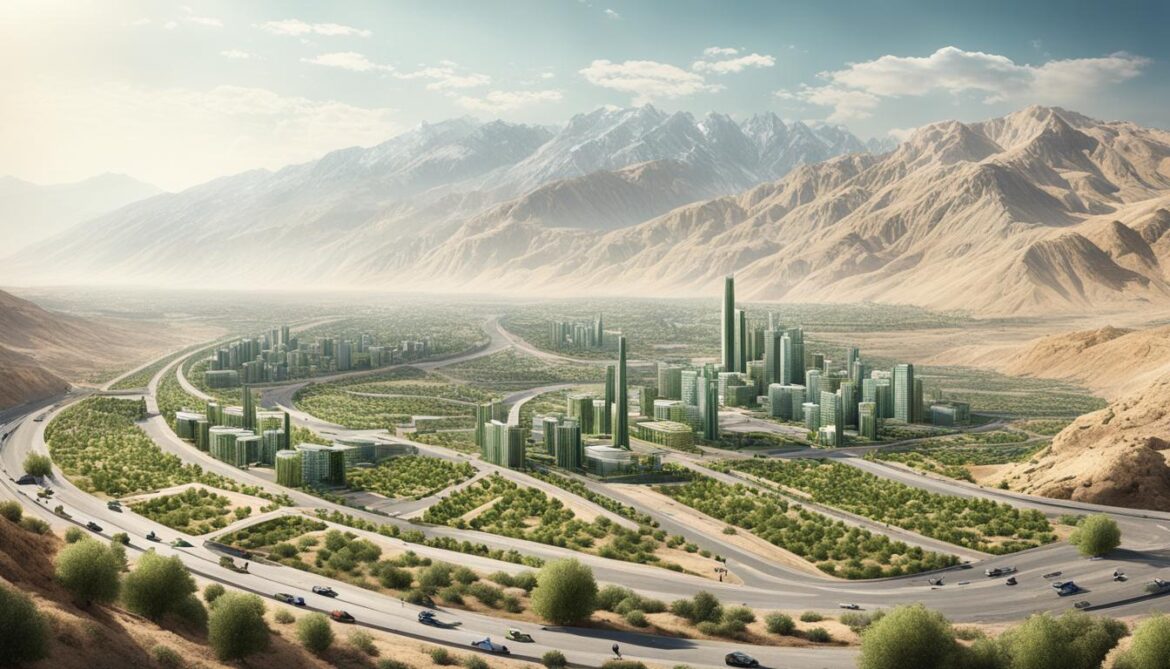
| Key Findings from Global Studies | Implications for Conservation |
|---|---|
| Human footprint negatively impacts biodiversity. | Protected areas must be effectively managed to minimize human impacts. |
| Human footprint maps are crucial for assessing conservation success. | Conservation efforts can be targeted and adjusted based on human footprint trends. |
| Collaborative efforts are necessary for effective conservation strategies. | Engagement with local communities and stakeholders is essential for success. |
The Importance of Protected Areas
Protected areas are of utmost importance in the conservation of biodiversity. As the global protected area estate has doubled in size since the early 1990s, it now covers 15% of the world’s land area. These areas are classified according to the International Union for Conservation of Nature (IUCN) management categories, with the primary objective of conserving biodiversity.
However, many protected areas worldwide are facing significant levels of human pressure, which may compromise their ability to preserve ecosystems and species.
| IUCN Management Categories | Objective |
|---|---|
| Category Ia: Strict Nature Reserve | Strictly conserve ecosystems, species, and habitats, with no human disturbance allowed |
| Category Ib: Wilderness Area | Protect large unmodified or slightly modified areas, primarily undisturbed by human activities |
| Category II: National Park | Protect large natural or near-natural areas of national or international importance |
| Category III: Natural Monument or Feature | Protect specific natural features, geological formations, or marine areas of special significance |
| Category IV: Habitat/Species Management Area | Conserve specific habitats or species through regular interventions and active management |
| Category V: Protected Landscape/Seascape | Conserve significant landscapes/seascapes while allowing human interaction compatible with conservation objectives |
| Category VI: Protected Area with Sustainable Use of Natural Resources | Allow sustainable use of natural resources while maintaining biodiversity conservation |
Achieving effective protection and management of protected areas is vital to ensure the preservation of biodiversity for future generations. It requires the implementation of appropriate conservation measures, collaboration among stakeholders, and sustainable practices that balance human needs with ecological integrity.
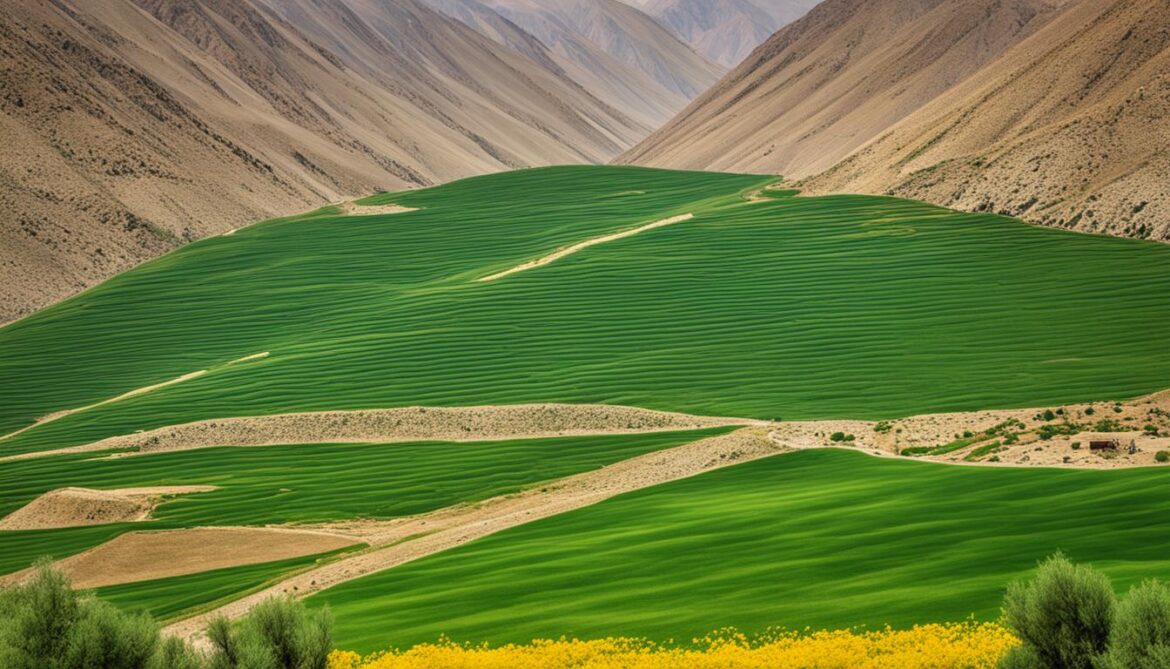
Biodiversity Planning in Iran
In Iran, efforts have been made to protect the country’s unique biodiversity through the establishment of protected areas. Iran has committed to the objectives of the Convention on Biological Diversity and has developed a national strategic plan for biodiversity conservation. This plan emphasizes the need to safeguard iconic and endangered species, such as the Asiatic Cheetah and Persian Leopard, along with their habitats.
Conservation efforts in Iran aim to preserve the diverse Persian wildlife and its natural habitats. However, there is a lack of comprehensive assessments regarding the state of Iran’s protected areas. This raises concerns about the potential impact of human activities on species conservation and underscores the importance of ongoing monitoring and evaluation.
“The conservation of Iran’s biodiversity is a priority, and protecting the country’s unique wildlife is a collective responsibility. By implementing effective biodiversity planning and management strategies, we can ensure the preservation of Iran’s natural heritage for future generations.”
In order to address these concerns, it is crucial to conduct detailed assessments of Iran’s protected areas. This will provide valuable insights into the effectiveness of existing conservation efforts and identify areas where additional measures are needed.
By integrating biodiversity planning into land-use and development policies, Iran can strike a balance between economic growth and ecological sustainability. This will require collaborative efforts between government agencies, local communities, and other stakeholders to ensure the long-term conservation of Persian wildlife and the preservation of Iran’s natural landscapes.
Conservation Initiatives in Iran
Table: Examples of Conservation Initiatives in Iran and Their Objectives
| Conservation Initiative | Objective |
|---|---|
| Establishment of Protected Areas | To provide safe havens for endangered species and preserve their habitats |
| Wildlife Rehabilitation and Rescue Programs | To rehabilitate injured or orphaned animals and release them back into the wild |
| Community-based Conservation Projects | To involve local communities in conservation efforts and enhance their understanding of the importance of biodiversity |
| Research and Monitoring Programs | To gather scientific data on Persian wildlife and their habitats, enabling evidence-based conservation decision-making |
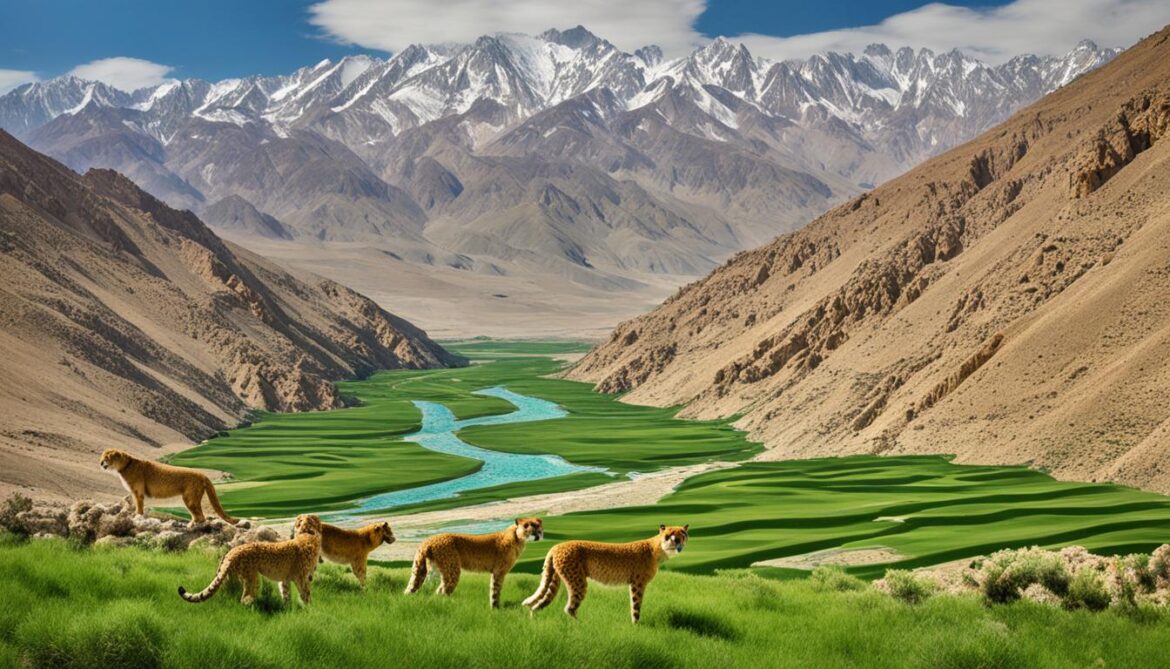
Iran’s National Human Footprint Assessment
A national-scale human footprint map for Iran was developed, providing valuable information on the extent and intensity of human pressure within Iranian protected areas. This assessment plays a crucial role in understanding the impact of human activities on Iran’s biodiversity and aids in the effective management of protected areas.
The human footprint map utilized high-resolution geospatial data to analyze various human pressures, such as population density, built environments, crop and pasture lands, and roads. By assessing the distribution and magnitude of these pressures, conservationists gain insights into the areas most affected by human activities.
This assessment helps identify specific areas where human pressure is particularly high, allowing for targeted management strategies to be implemented. Through effective protected area management, interventions can be designed to alleviate human pressures and safeguard Iran’s precious biodiversity.
By understanding the footprint of human activities, conservationists and policymakers can make informed decisions on the allocation of resources and prioritize conservation efforts in the most vulnerable areas. This data-driven approach enhances the effectiveness of conservation initiatives and ensures the long-term preservation of Iran’s diverse ecosystems and species.
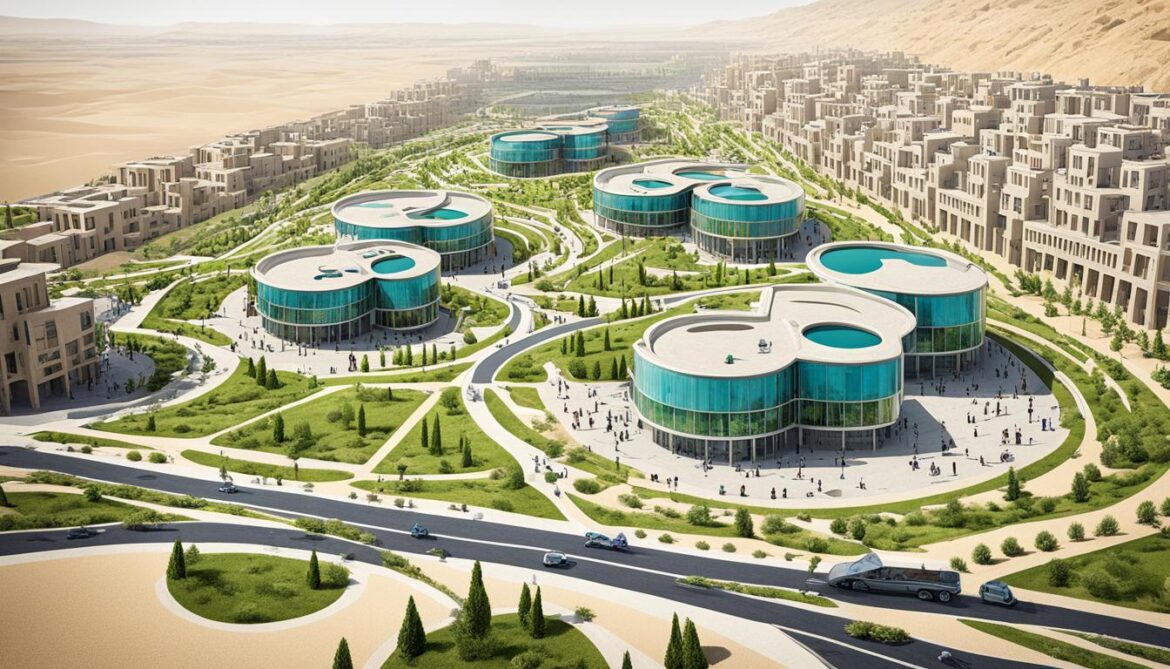
Data Used in the Assessment
The national human footprint assessment in Iran relied on high-resolution geospatial data to capture various aspects of human pressure. Key data sets utilized include:
- Human population density: Measuring the concentration of human settlements and their impact on surrounding areas.
- Built environments: Assessing the extent of urbanization and its associated infrastructure.
- Crop and pasture lands: Analyzing the expansion of agricultural activities and their influence on natural habitats.
- Roads and transportation networks: Examining the accessibility and connectivity of different regions.
By combining and analyzing these data sets, a comprehensive understanding of the human footprint within Iranian protected areas has been achieved. This information serves as a valuable tool for protected area managers, enabling them to implement targeted conservation strategies that mitigate human pressures and safeguard Iran’s unique biodiversity.
Threats to Iran’s Terrestrial Biomes
Iran’s terrestrial biomes face significant threats from human activities such as urbanization, agricultural development, and industrial pollution. These threats have led to habitat damage and fragmentation, posing a grave danger to the country’s biodiversity.
The destruction of habitats located in temperate broadleaf and mixed forests, as well as flooded grasslands and savannas, has seen a worrying increase. Conversely, the deserts and xeric shrublands biome has experienced a decrease in habitat.
Roads, urban and agricultural developments are among the biggest contributors to the degradation of Iran’s terrestrial biomes. Their expansion and encroachment on natural areas disrupt the delicate balance of ecosystems and threaten the survival of numerous species.
“The destruction of our terrestrial biomes in Iran is alarming. We must urgently address the threats posed by urbanization, agricultural development, and industrial pollution in order to preserve our country’s rich biodiversity.” – Dr. Ali Hassanpour, Environmental Scientist
Impact of Urbanization
With rapid urbanization, the conversion of natural habitats into cities and residential areas has become a major threat to Iran’s terrestrial biomes. Urban expansion leads to habitat loss, fragmentation, and disruption of ecological processes.
Agricultural Development and Habitat Loss
The expansion of agriculture and associated practices, such as irrigation and the use of fertilizers and pesticides, has resulted in the destruction of natural habitats. The conversion of land for agriculture leads to habitat loss, reducing the available space for diverse species to thrive.
Industrial Pollution and Ecosystem Degradation
Industrial activities release pollutants into the environment, causing air, soil, and water pollution. These pollutants have detrimental effects on ecosystems and the organisms that inhabit them, leading to biodiversity loss and ecosystem degradation.
| Threats to Iran’s Terrestrial Biomes | Impact |
|---|---|
| Urbanization | Habitat loss and fragmentation, disruption of ecological processes |
| Agricultural Development | Habitat loss, reduction in biodiversity, soil degradation |
| Industrial Pollution | Biodiversity loss, ecosystem degradation, pollution of air, soil, and water |
It is imperative for Iran to implement sustainable development practices and conservation strategies that mitigate the threats posed by urbanization, agricultural development, and industrial pollution. Only through concerted efforts can we safeguard our terrestrial biomes and protect the biodiversity that makes our country unique.
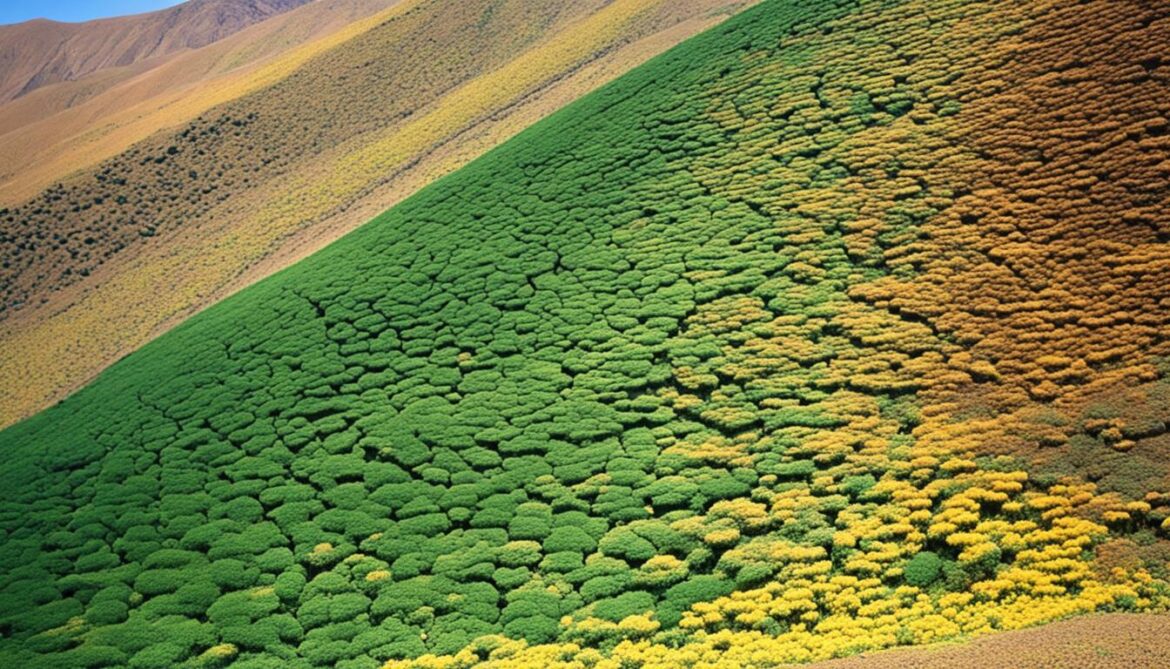
Conservation Efforts in Iran
Since the 1950s, Iran has made significant strides in wildlife conservation, with a focus on protected area management and the preservation of endangered species. The Game Council, established during this period, later evolved into the Game and Fish Department and eventually became the Department of the Environment. These organizations played a crucial role in the establishment of protected areas, the enforcement of regulations, and the implementation of hunting programs.
However, with political changes and mismanagement, the competency of the Department of the Environment deteriorated over time, leading to challenges in wildlife conservation and protected area management. To address these issues, the government has begun making efforts to appoint highly qualified individuals and improve the budget allocated to wildlife conservation initiatives.
“We are committed to strengthening our efforts in wildlife conservation and protected area management. Our aim is to ensure the long-term survival of endangered species and the preservation of Iran’s unique biodiversity. By appointing capable individuals and providing adequate resources, we can overcome the challenges we currently face and make significant progress in the conservation of our natural heritage.”
– Environmental Minister, Dr. Mohammad Bakhtiari
The revitalization of conservation efforts in Iran is crucial in safeguarding the country’s rich wildlife and preserving its natural habitats. Through effective management strategies, increased public awareness, and international collaborations, wildlife conservation in Iran can regain its momentum and continue to make a positive impact on the preservation of endangered species and biodiversity.
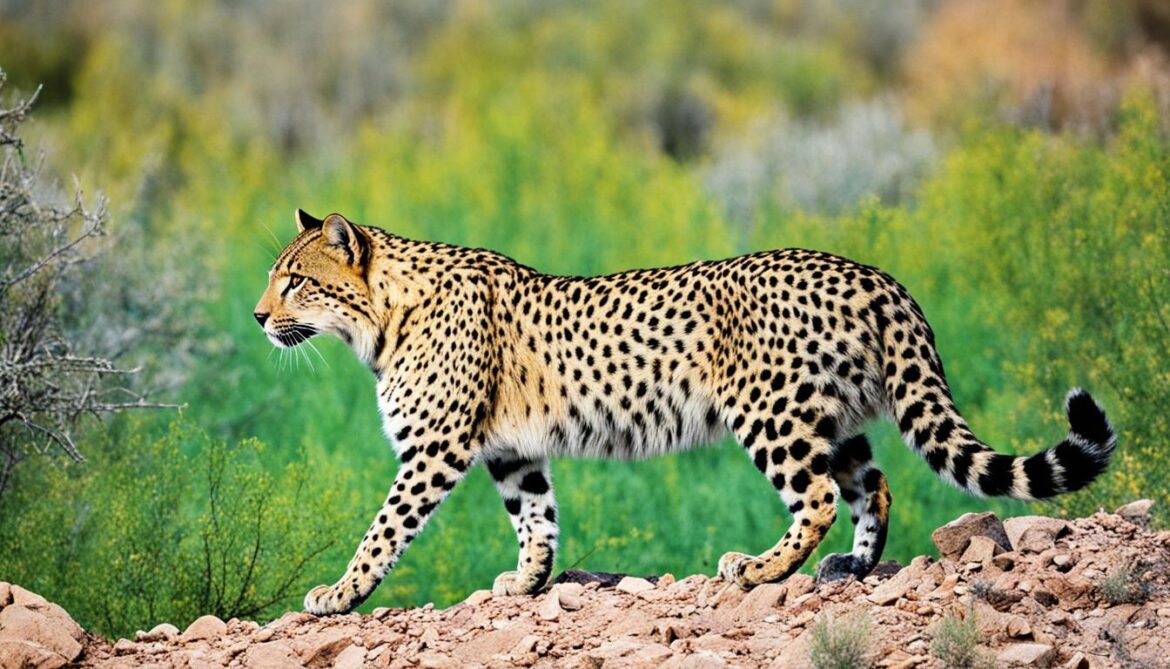
Assessment of Habitat Risk in Iran’s Biomes
Habitat risk assessments have been conducted in Iran’s terrestrial biomes, revealing the cumulative risk of habitat degradation caused by man-made activities. The assessment considers factors such as land use changes in agriculture, industry, urbanization, and rural areas, as well as the extent of habitat exposure to these activities and the consequences of that exposure. Biomes such as flooded grasslands and savannas and montane grasslands and shrublands are found to be at the highest risk.
These findings highlight the importance of conservation initiatives to protect Iran’s terrestrial biomes and wildlife from human-induced threats. Efforts must be made to mitigate the stressors that contribute to habitat degradation and promote sustainable practices that minimize cumulative risk. Conservation organizations and government agencies need to collaborate to develop and implement effective strategies for habitat preservation and restoration.
Cumulative Risk Factors
The assessment of habitat risk in Iran’s biomes takes into account various man-made activities that contribute to habitat degradation. These activities include:
- Conversion of natural habitats for agricultural purposes
- Industrial development and pollution
- Urbanization and infrastructure expansion
- Unsustainable land use practices
These stressors have direct and indirect impacts on the biodiversity and ecological integrity of Iran’s biomes. By understanding the cumulative risk factors, conservation initiatives can address the specific challenges faced by each biome.
The Importance of Conservation Initiatives
Conservation initiatives are essential for protecting Iran’s terrestrial biomes and preserving the diverse wildlife that inhabits them. These initiatives should focus on:
- Implementing sustainable land management practices to reduce habitat degradation
- Establishing and effectively managing protected areas
- Promoting public awareness and education about the value of biodiversity
- Supporting research and monitoring efforts to track changes in habitat quality
Conservation initiatives should also involve local communities and stakeholders to ensure their active participation in habitat preservation and restoration. By working together, we can safeguard Iran’s biomes and maintain the ecological balance necessary for the well-being of both wildlife and humans.
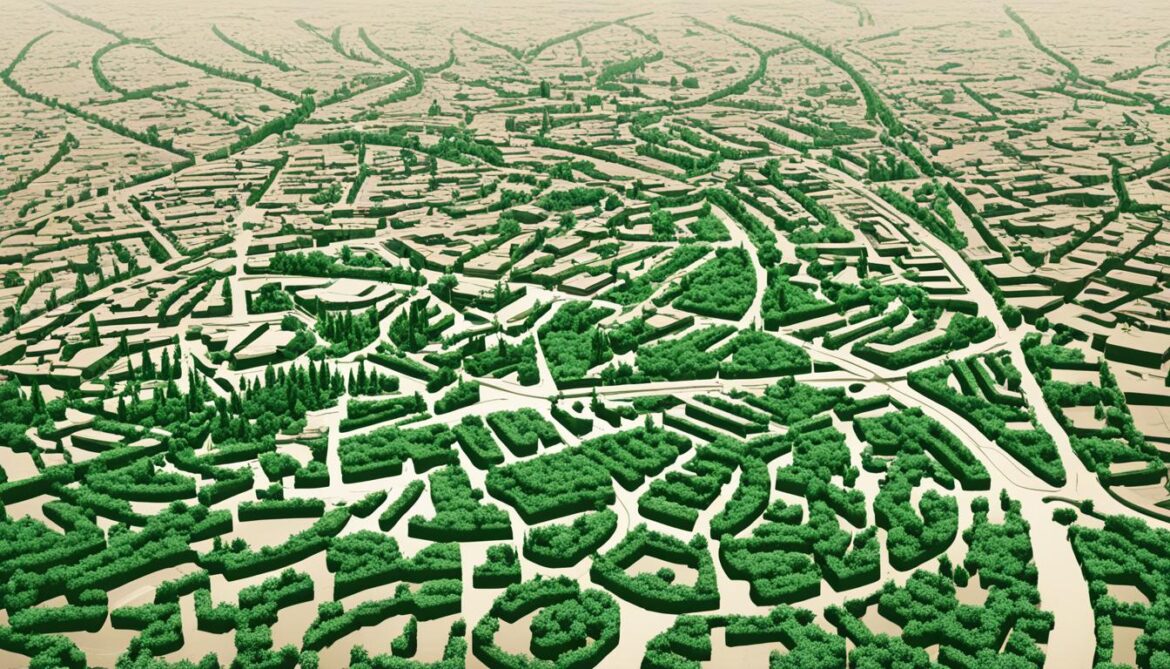
Conclusion
The integration of biodiversity with the built environment in Iran presents both unique challenges and exciting opportunities for sustainable urban design and environmental conservation. The assessment of the human footprint and habitat risk in Iran’s protected areas has provided valuable insights to inform targeted conservation strategies. Safeguarding Iran’s diverse biodiversity, protecting endangered species, and preserving natural habitats are crucial for the long-term conservation of the country’s rich wildlife and ecosystems.
To achieve these conservation goals, comprehensive planning, effective management, and collaboration between government agencies, academia, and the private sector are essential. By fostering green architecture and sustainable development practices, Iran can continue to protect its natural heritage while promoting economic growth and improved quality of life for its residents.
Innovation in conservation strategies, such as the implementation of wildlife corridors, habitat restoration initiatives, and community engagement programs, will further enhance Iran’s efforts in wildlife preservation and biodiversity conservation. By adopting sustainable urban design principles, incorporating green spaces, and minimizing the environmental impact of urban development, Iran can create harmonious and resilient urban environments that coexist with its natural ecosystems.
FAQ
What is the relationship between Iran’s biodiversity and the built environment?
Iran’s biodiversity and the built environment are interconnected. The rapid urbanization, agricultural development, and industrial pollution in Iran pose significant threats to its terrestrial biomes, leading to habitat degradation and fragmentation.
How do human activities impact biodiversity in Iran?
Human activities such as urbanization, agricultural development, and industrial pollution have negative impacts on Iran’s biodiversity. These activities lead to habitat damage, species population declines, and the degradation of ecosystem services and functions.
What are protected areas and their importance in biodiversity conservation?
Protected areas are designated regions with the primary objective of conserving biodiversity. They play a crucial role in preserving ecosystems and species. However, many protected areas worldwide, including those in Iran, are facing substantial levels of human pressure, potentially compromising their effectiveness in conserving biodiversity.
What is Iran’s national human footprint assessment?
Iran conducted a national-scale assessment of human footprint, which provides valuable information on the extent and intensity of human pressure within Iranian protected areas. This assessment allows for targeted management strategies to alleviate human pressures and protect Iran’s biodiversity.
What are the major threats to Iran’s terrestrial biomes?
Iran’s terrestrial biomes face threats from various human activities, including urbanization, agricultural development, and industrial pollution. These activities lead to habitat damage and fragmentation, endangering the biodiversity of the country.
What are the conservation efforts in Iran?
Conservation efforts in Iran began in the 1950s with the establishment of the Game Council and later the Game and Fish Department, which eventually became the Department of the Environment. These efforts focus on protecting wildlife and establishing and managing protected areas.
What is the assessment of habitat risk in Iran’s biomes?
Habitat risk assessments have been conducted in Iran’s terrestrial biomes, revealing the cumulative risk of habitat degradation caused by man-made activities. These assessments consider factors such as land use changes, exposure to human activities, and the consequences of that exposure, highlighting the importance of conservation initiatives.
What is the importance of biodiversity planning in Iran?
Biodiversity planning in Iran is crucial for preserving the country’s unique wildlife and ecosystems. Efforts have been made to designate protected areas and develop national strategic plans for biodiversity conservation. However, comprehensive assessments of the state of Iran’s protected areas are needed to ensure effective conservation.
How can sustainable urban design contribute to biodiversity conservation in Iran?
Sustainable urban design practices can help conserve biodiversity in Iran by minimizing the negative impacts of urbanization on natural habitats. This can be achieved through the incorporation of green spaces, wildlife-friendly infrastructure, and sustainable development practices in urban planning and design.
What are the wildlife preservation efforts in Iran?
Iran is committed to preserving its unique wildlife, including iconic and endangered species such as the Asiatic Cheetah and Persian Leopard. Efforts are being made to safeguard their habitats, establish protected areas, enforce regulations, and improve the management and budget allocation for wildlife conservation.



